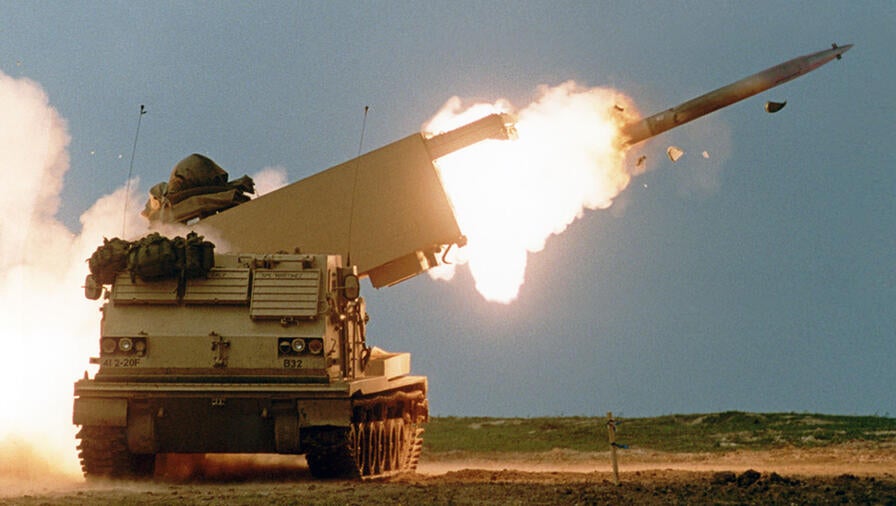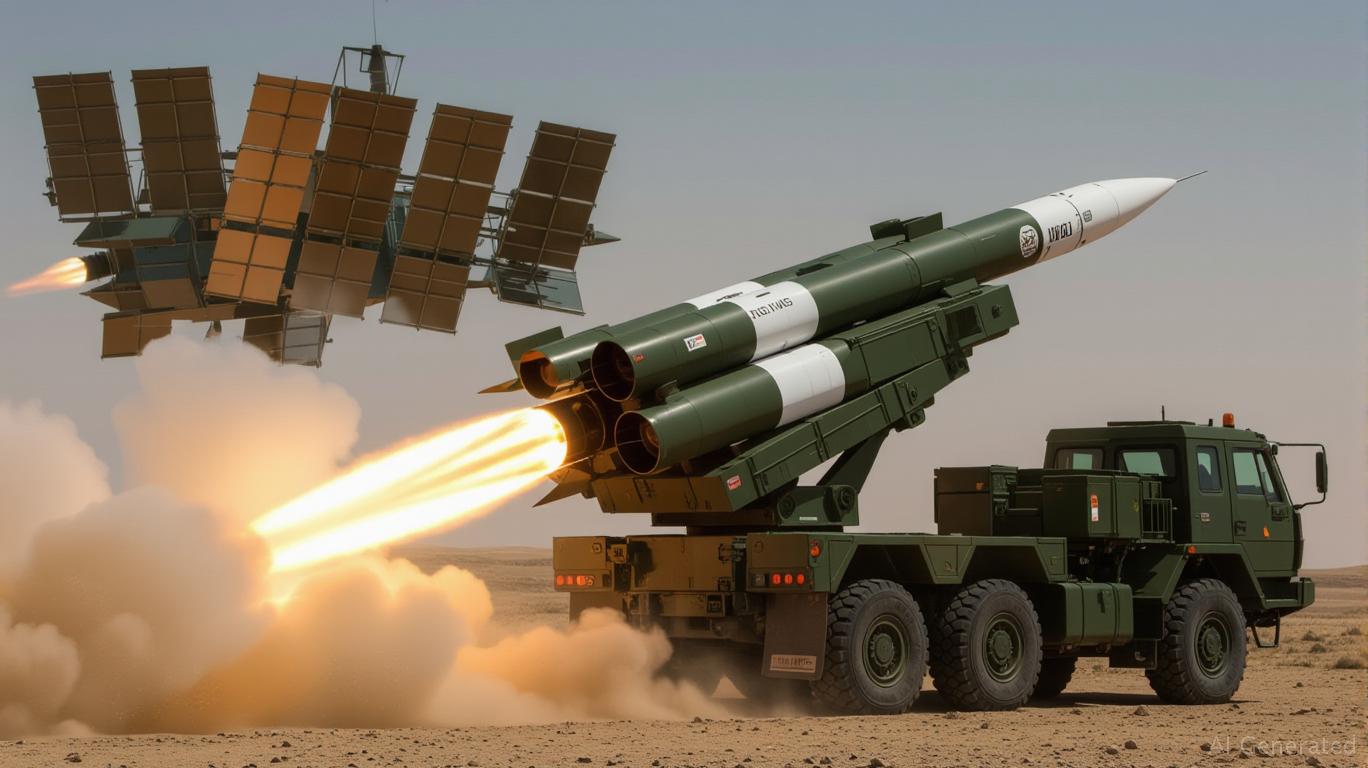More detailed data on the quantities and timeline of these deliveries is
expected to be disclosed in the coming weeks, as the Pentagon prepares
operational logistics to facilitate rapid transport of the munitions to
Ukrainian forces.
Breaking News: U.S. Restarts Delivery of Weapons to Ukraine with 155mm Shells and GMLRS Rockets.
According to information published by the
Associated Press Agency (AP) on July 10, 2025, President Donald Trump has ordered the resumption of U.S. deliveries of defensive weapons to Ukraine.
- The announcement was made on July 7, 2025, marking a critical reversal in policy following a months-long suspension of major military aid.
- Citing AP sources, the new delivery package includes 155mm artillery munitions and precision-guided GMLRS (Guided Multiple Launch Rocket System) rockets intended for Ukraine’s HIMARS (High Mobility Artillery Rocket System) rocket launcher vehicle.
Follow Army Recognition on Google News at this link
A U.S.-supplied HIMARS fires a GMLRS rocket during training exercises, illustrating the precision-strike capability of the system included in the resumed U.S. military aid package to Ukraine in July 2025. (Picture source: U.S. D
This renewed U.S. commitment to supplying key battlefield munitions underscores Washington’s strategic intent to sustain Ukrainian forces in their ongoing counteroffensive operations against entrenched Russian positions.
- The inclusion of 155mm artillery shells, a core component of NATO-standard field artillery, is vital to supporting Ukraine’s heavy artillery brigades that rely on long-range, high-volume firepower to target enemy fortifications and disrupt logistics chains.
- More notably, the provision of GMLRSs (Guided Multiple Launch Rocket System) reintroduces precision-strike capabilities to Ukraine’s arsenal, enabling Ukrainian forces to target high-value Russian assets such as ammunition depots, command posts, and bridging equipment with pinpoint accuracy from standoff ranges.
Artillery has emerged as the decisive factor in the Russia-Ukraine conflict, with both sides heavily dependent on indirect fires to shape battlefield outcomes. For Ukraine, maintaining a steady flow of 155mm ammunition is essential to sustaining pressure along contested frontlines, suppressing enemy artillery, and preventing Russian advances.
- Without sufficient artillery rounds, Ukrainian forces risk losing momentum in counteroffensive operations and becoming vulnerable to massed Russian barrages, which continue to inflict heavy damage across defensive positions and civilian infrastructure.
- The 155mm shells not only provide destructive power but also offer interoperability with a wide range of NATO-supplied howitzers already in use by Ukrainian units, such as the U.S. M777, French Caesar, and German PzH 2000.
The return of GMLRS (Guided Multiple Launch Rocket System) rockets, with a range of 70 to 85 kilometers, provides Ukraine with a much-needed precision engagement capability at operational depth.
- These munitions have repeatedly demonstrated their strategic value since 2022, particularly in neutralizing Russian command infrastructure, logistics hubs, and artillery concentrations behind the front lines.
- Fired from mobile U.S. HIMARS rocket launcher vehicle, GMLRS has allowed Ukrainian forces to strike targets previously beyond reach, disrupting enemy coordination and delaying reinforcements.
- In a war dominated by artillery duels and positional attrition, the ability to conduct precision long-range fires remains one of Ukraine’s few advantages against a numerically superior adversary.
This decision arrives at a time when Ukrainian forces face mounting ammunition shortages and are engaged in fierce combat along multiple sectors of the eastern and southern front lines. U.S. deliveries of 155mm rounds had previously played a critical role in maintaining artillery parity with Russian forces, who continue to rely heavily on massed fires.
- The restoration of these supplies will likely boost morale among Ukrainian troops and reinforce NATO’s message of continued support despite recent political turbulence in Washington.

This development also signals a potential resumption of larger-scale U.S. defense industrial support to Ukraine, with possible implications for ramped-up production at U.S. munitions plants, renewed funding for overseas deliveries, and increased coordination with European partners.
Defense Contractors in the Spotlight: Strategic Opportunities Amid Ukraine Conflict and Shifting Policies Jul
10
As explained by the Russian state-owned company Rostec on July 10, 2025, the Russian Aerospace Forces (VKS) have formally introduced a new operational role for the Sukhoi Su-34 fighter-bomber, which will now also serve as a tactical reconnaissance platform in addition to its primary ground-attack function. The announcement coincided with the delivery of another batch of Su-34s to frontline tactical aviation units by the United Aircraft Corporation (UAC), part of the Rostec State Corporation.
Jul
10
As reported by Biz Hankook on July 8, 2025, the South Korean company Korea Aerospace Industries (KAI) has initiated the development of a carrier-based unmanned combat aerial vehicle (UCAV), derived from its existing jet-powered unmanned platform under development for the South Korean Air Force. The program was revealed during the 8th Korea Strait Victory Seminar held at the National Assembly on July 8, 2025.
Jul
10
On the 9th of July, 2025, Türkiye’s largest and most advanced warship, the formidable TCG Gelibolu, is set to join Standing NATO Maritime Group Two (SNMG2), marking a significant milestone for Turkish naval power projection and alliance solidarity. This deployment underscores Ankara’s ambition to reinforce collective maritime security in the Mediterranean amid evolving regional tensions.
Jul
10
On July 9, 2025, Germany marked a significant milestone as, for the first time, a Puma infantry fighting vehicle was transported aboard an A400M military transport aircraft. This unprecedented operation, reported by German Army, highlights Germany’s ongoing efforts to strengthen its rapid reaction capabilities and adapt its armored forces for modern, flexible deployments.
Jul
10
On July 9, 2025, Britain and France unveiled a strengthened defence industrial accord designed to bolster Europe’s missile stockpiles and future-proof its deep-strike capabilities under the revitalised “Entente Industrielle.” This renewed commitment comes at a pivotal moment as both nations confront the enduring security implications of the Ukraine war and move to reinforce NATO’s deterrent edge with cutting-edge technology.
Jul
10
On July 8, 2025, the Russian Ministry of Defense held a keel-laying ceremony at the Yantar Baltic Shipyard in Kaliningrad for the Sergey Kabanov, the third ship of the modernized Project 11711M series of large landing ships. The event coincided with the shipyard’s 80th anniversary.
Jul
10
On July 9, 2025, Bell Textron confirmed it has been selected to progress into the design and construction phase of a groundbreaking X-plane under Phase 2 of the Defense Advanced Research Projects Agency (DARPA) Speed and Runway Independent Technologies (SPRINT) program. This decisive funding award gives Bell the green light to build an experimental aircraft capable of both hovering in remote, austere locations and cruising at jet-like speeds up to 450 knots.
==





No comments:
Post a Comment